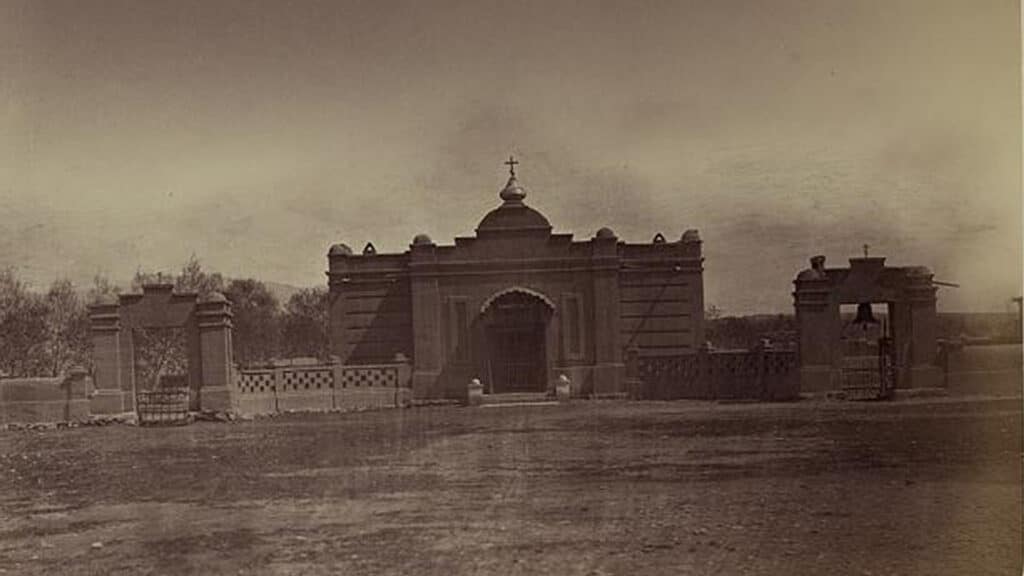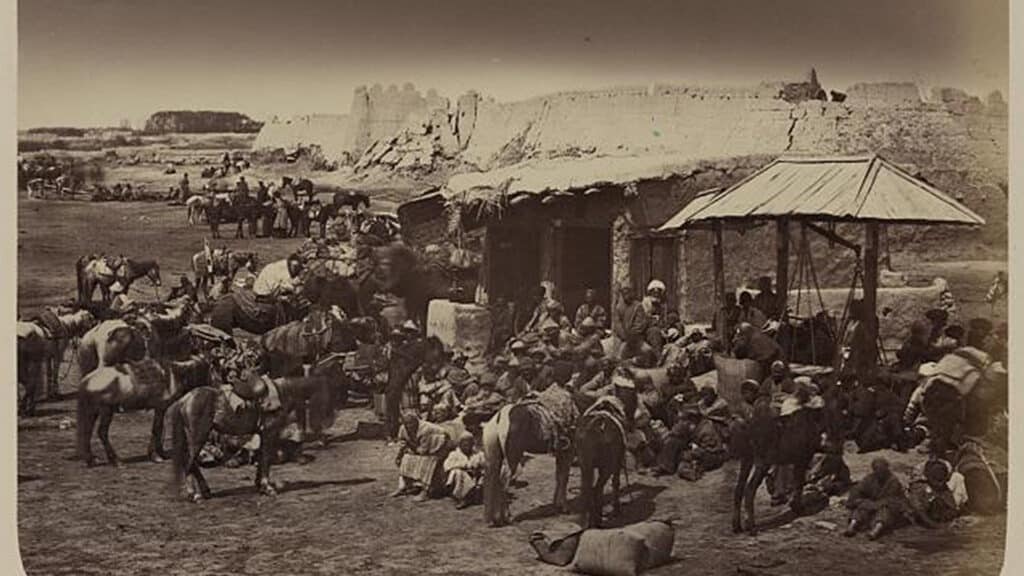
In the 19th century, Taraz — the city that emerged through the efforts of merchants on the banks of the Talas River many centuries ago — found itself amid a historical maelstrom. It was stormed by foreign troops; it served as a transshipment point for trade caravans; people disputed over land here, and it was well known for its bazaars and gardens. For any curious traveler, it was a lively, contradictory, dusty, but fascinating theater of changes.
In the 19th century, Taraz was widely known as Aulie-Ata, a name used by all military officials, diplomats and explorers of the 19th century visiting the area. Their vivid observations offer a way to bring color and sound to the black-and-white pictures of the ancient city.

What was seen on the approach to the city
According to Colonel of the Russian Imperial Army Pavel Schrader, who visited Aulie-Ata in 1866, the town was «covered with dark, dense greenery. Apart from the overgrown trees, mostly talus and poplar, nothing can be seen…»
«Only after entering the first street — another wide alley — one starts to see occasional houses made of clay and hiding behind trees… There are houses of Sarts [the old-fashioned name for modern-day Uzbeks] with inevitable canopies of reed wattles, which are trading stands offering customers sultanas, pistachios, pieces of mutton, knives in leather sheaths, pieces of cheap cotton and chintz, sacks with barley, rice and millet, as well as purses and other items of Asian style made by the Sarts. There is also a stove, where flatbreads and dumplings are cooked, and water is boiled in copper kettles…»
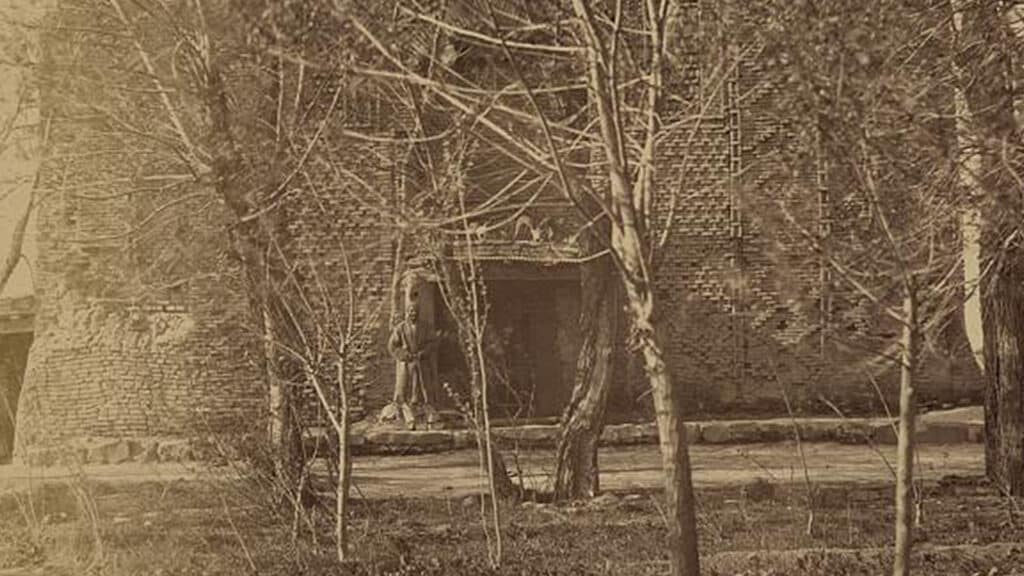
Schrader was surprised that this steppe area could be turned into a good agrarian zone:
«Someone told me with great envy that this land is wasted; it could yield a lot of wheat as there was no problem with water supply…»
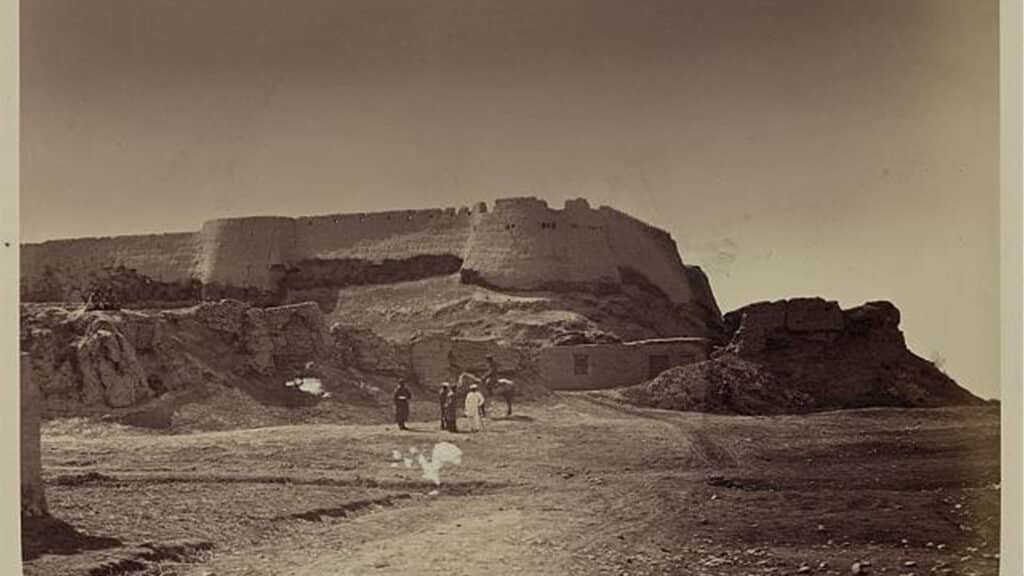
The central square and the bazaar
It would be wrong to say that the bazaar was the center of Aulie-Ata because the whole town itself was one big marketplace. Another Russian military officer and ethnographer, Aleksandr Gaines, wrote in 1866:
«Aulie-Ata is packed with small shops, so that, strictly speaking, the bazaar — covered only in some places — stretches all over the city within its fort walls. This bazaar is different from the marketplace in Shymkent, where all activity is concentrated in shops selling all sorts of stuff. In Taraz, there is little traffic in shops, but all the streets between the shops are crowded with riding Kirghiz [old-fashioned name for the Kazakhs] and sheep brought by them. Sometimes, there are so many sheep that it is very hard to simply pass by…»
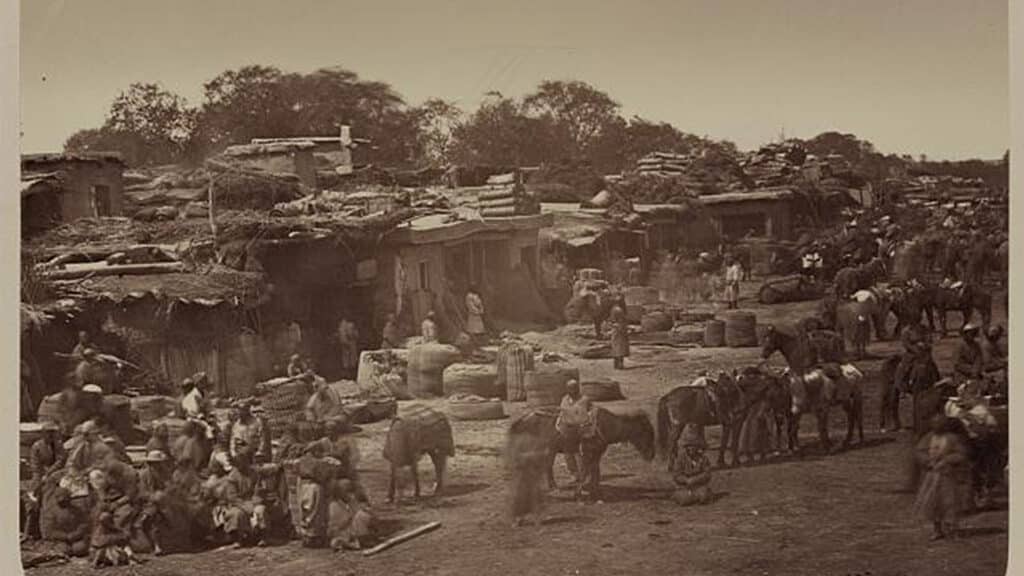
«As it sits in the middle of the cattle routes from the Siberian steppe to Central Asia, Aulie-Ata has great commercial significance… The trade in this city grows monthly and is likely to undergo very large development. Livestock trade based on cash and barter relations is a distinguished feature of Aulie-Ata. Bringing a few rams to the city, a nomad buys everything he needs, including fabric for his clothes.»
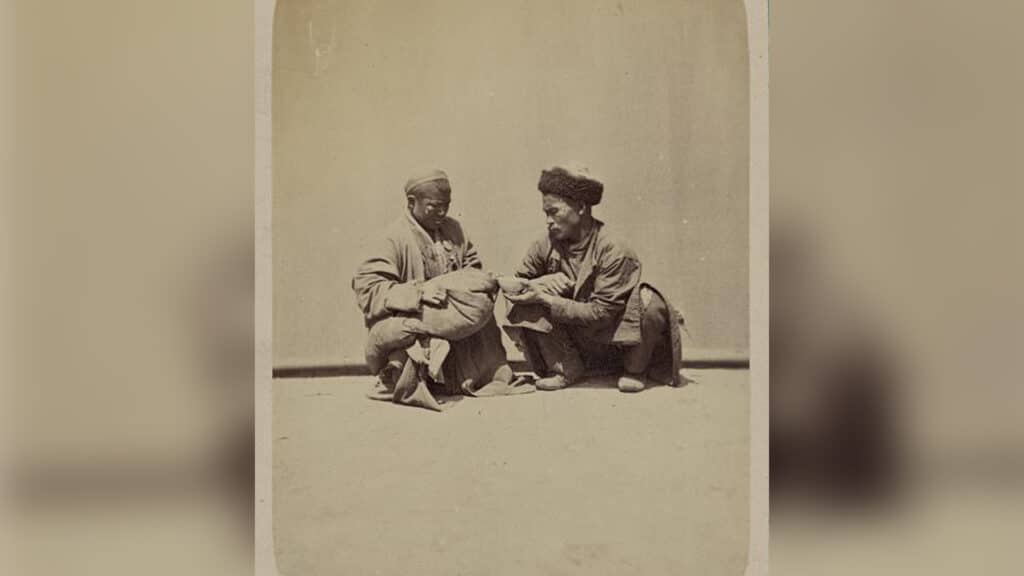
Trade
In their notes, both Schrader and Gaines described in detail how carefully organized trade was on the streets of Taraz, what taxes were imposed on traders, and how skillfully they conducted business, switching from one language to another. At the same time, everyone was dissatisfied with the necessity of paying a tax in favor of the Kokand Khanate for trading in the streets of the city. Meanwhile, the cattle trade was conducted according to its own rules — nomads, for example, took money for cattle in advance, but if suddenly there was a shortage of livestock, they always compensated for it the next year, did not deny the debt or try to hide.
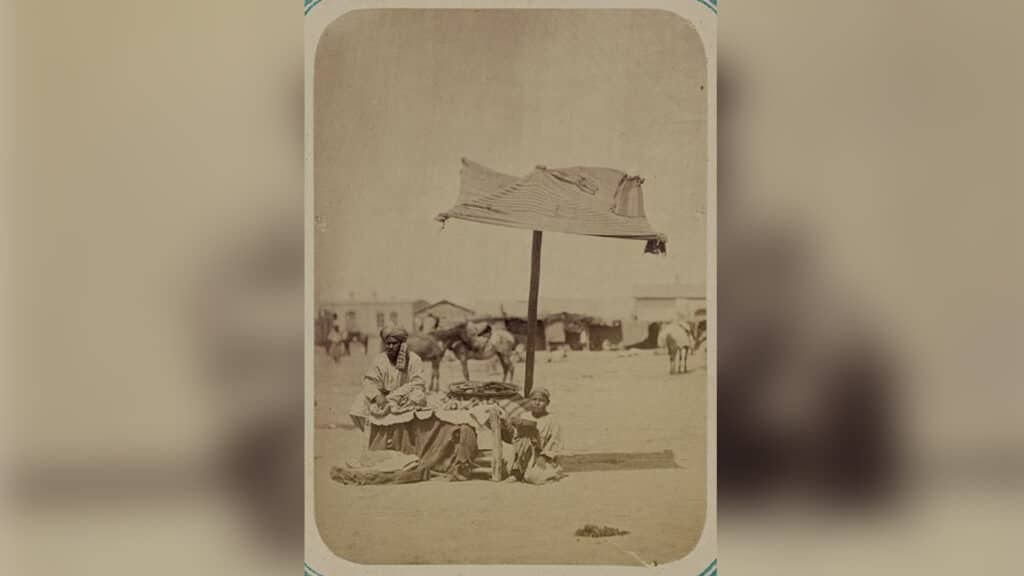
Merchants on the streets of 19th-century Taraz / Photo: «Turkestan Album.» Photo editor: Milosh Muratovskiy
Daily life and architecture
As many travelers noted, houses in old Taraz were primarily one-story, with flat roofs and courtyards. These houses were quite modest in appearance, while all activities were concentrated in the courtyards, which served locals as the center of their lives. They cooked there, received guests and relaxed during the hot hours.
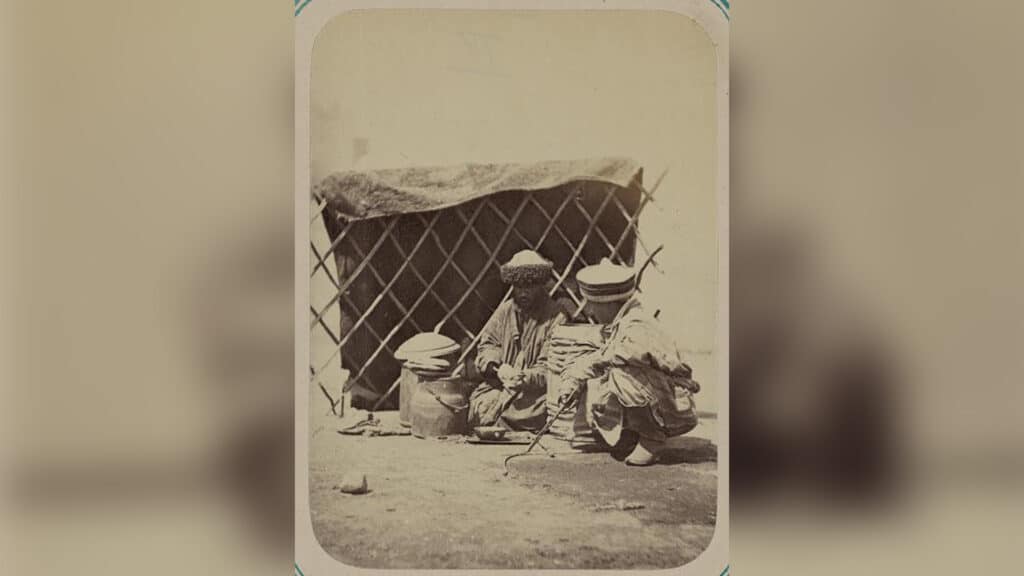
All those who visited the city and wrote about it were amazed by the water supply system in Taraz. Multiple water canals or aryks supplied water from the Talas River, irrigating nearby crop fields and cooling the air in residential neighborhoods. Locals put great effort into arranging the aryks, maintaining them in good condition and often passing them on as inheritance. Interestingly, a special system of land use was built around the aryks. Usually, the land adjacent to the aryks was annually distributed among landowners; the land remaining free was then divided by lots.
Thanks to these travel notes and old photographs, we can recreate a picture of what 19th-century Taraz — a city with an ancient history and character — looked like.
